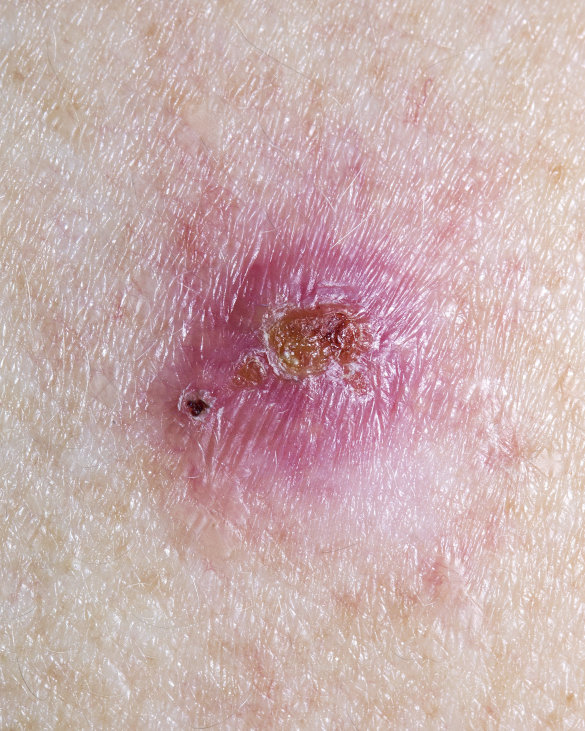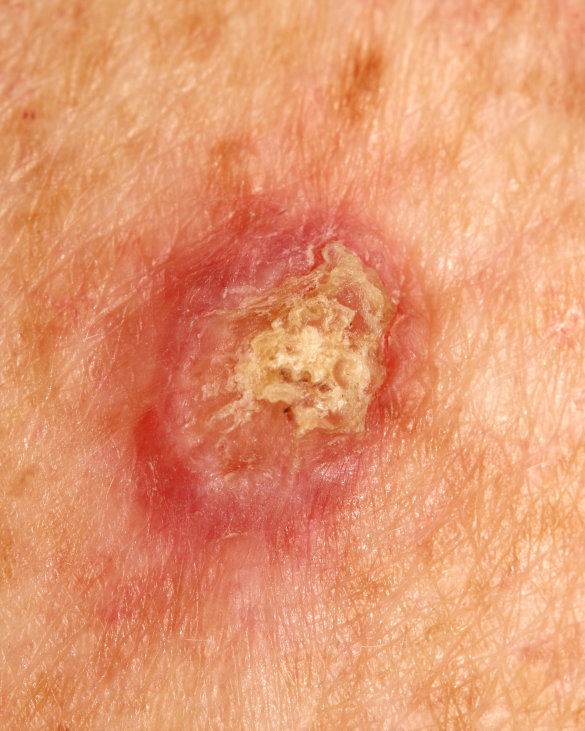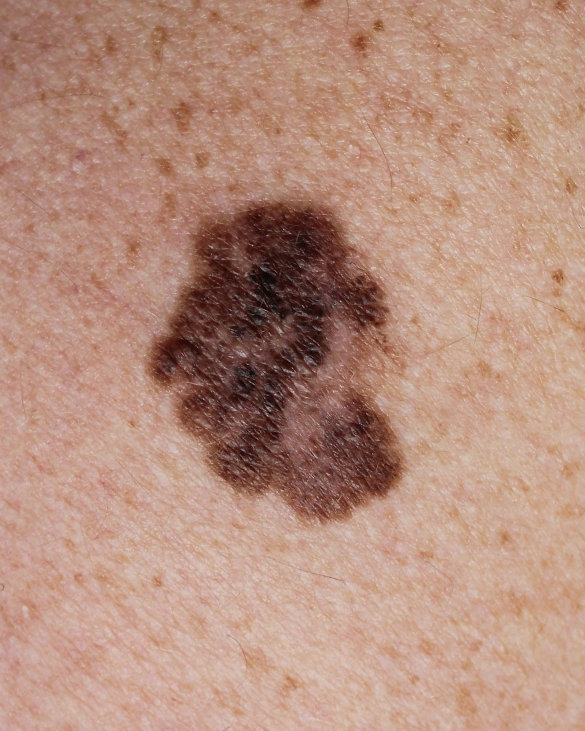What is skin cancer?
Skin cancer is the abnormal growth of skin cells. There are three main types of skin cancer, named after the type of skin cell they develop from:
Basal cell carcinoma (BCC)
Basal cell carcinoma is also known as BCC or sometimes “rodent ulcer”, it is the commonest cancer in the world, but very few people actually die from this cancer. When left untreated it will slowly but surely disfigure the skin like a mouse chewing away a piece of cheese. More aggressive types of BCC can travel down nerves and cartilage and infiltrate the skull. If not adequately treated, these aggressive BCCs are often the most difficult to recognise. BCC can cause significant morbidity through cosmetic disfigurement, destruction and invasion of important structures although, since they usually grow at a fairly slow rate, they can be treated easily if detected early.
Squamous cell carcinoma (SCC)
SCC is the second most common skin cancer, and is more dangerous than BCC as it can spread to other parts of the body, especially if the tumour is thick and is located on the scalp, ear or lip. They cause approximately 300 deaths each year in Australia.
“Sunspots” (actinic keratosis or solar keratosis) and “Bowen’s disease” are technically squamous cell carcinomas but they have not yet become invasive. Only a very small percentage of sunspots ever become invasive SCCs but it is thought that most SCCs do start out as a sunspot, hence sunspots should be treated. When a sun-spot becomes a SCC, it usually stings or becomes sore and then grows fairly quickly.
Melanoma
Melanoma is the third most common skin cancer in Australia. Around 9,000 Australian are diagnosed with melanoma each year and about 1,600 die from this disease each year. However, early diagnosis and treatment can greatly improve survival.
Melanoma in situ, or Level 1 melanoma, is confined to the top layer of the skin and is not as yet “invasive”. It is totally curable if completely excised. As melanoma grows in thickness the cure rate becomes greatly reduced. So it is most important that melanoma is detected as early as possible. A patient with a melanoma of less than 0.75 mm thick can expect to have 95% cure rate however, if the melanoma is 4 mm thick the patient’s life expectancy on average is less than 50% at 5 years.
Your risk of future skin cancers
If you have had a skin cancer removed previously, your risk of developing another cancer is much higher. Find out more at our page:



